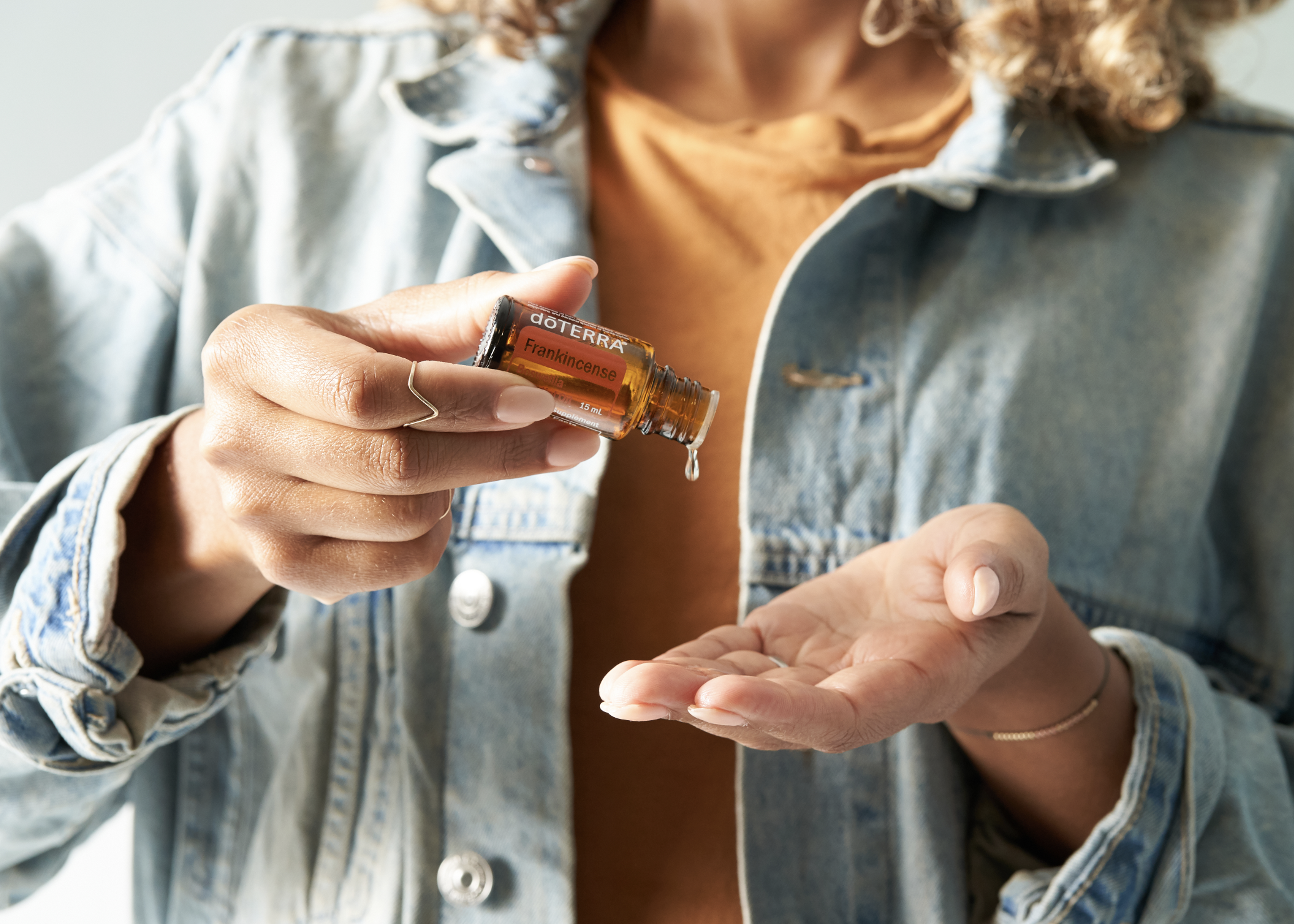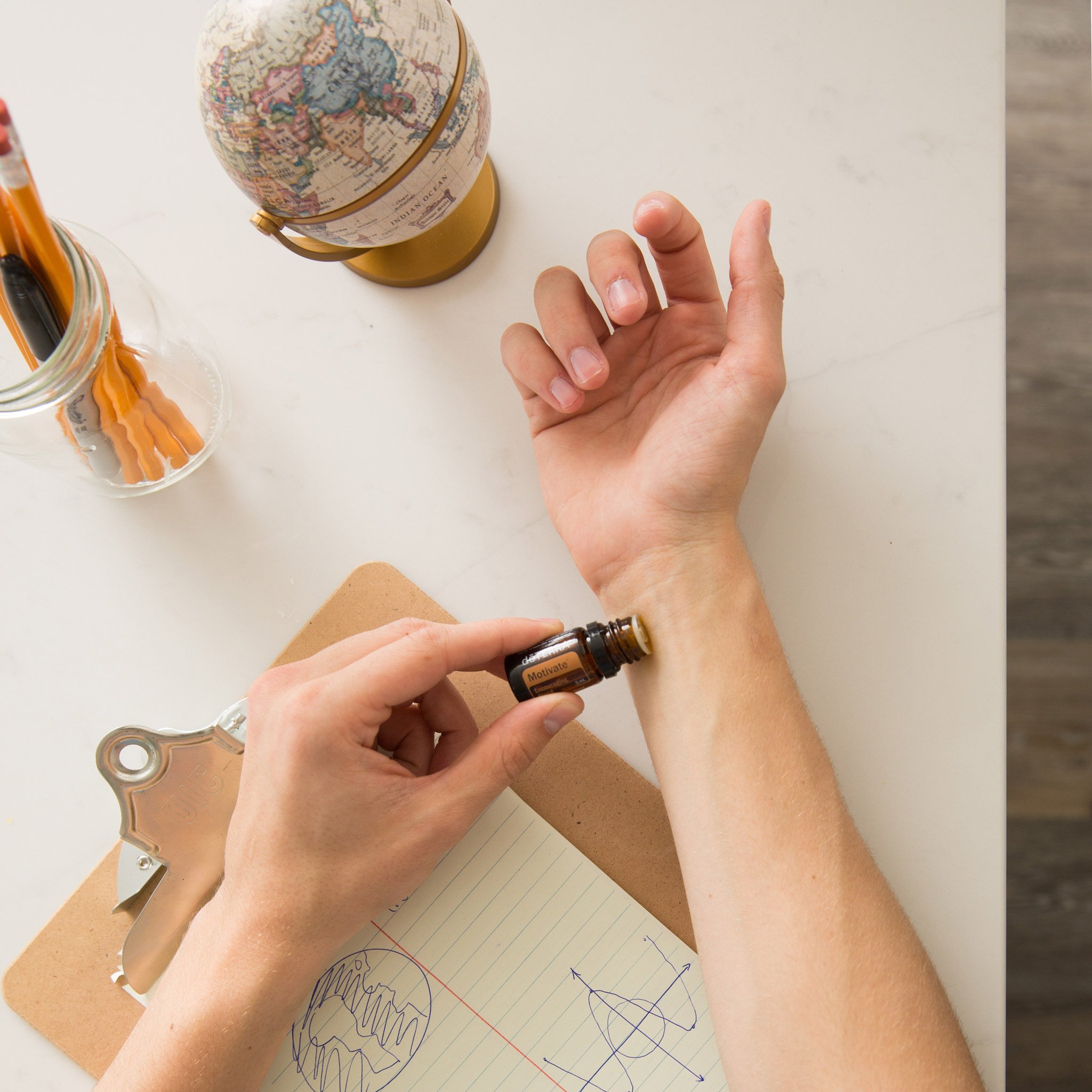Oil Usage
The purity of an essential oil is its most important characteristic. When an essential oil is adulterated or contaminated, it becomes less effective and can even be dangerous. Above all else, purity is dōTERRA’s first priority when producing essential oils.
Traditionally, certain essential oil application methods have been preferred or used exclusively.
However, as the research surrounding essential oils continues to develop, a greater understanding of application methods is now understood. All application methods are safe when used appropriately. One or multiple application methods can be used for a wide range of emotional and physical wellness applications. They can be used a single oil at a time or in complex blends, in the following methods:
From the beginning, we’ve made it our mission to share pure, quality essential oils with the world. However, without a definitive standard for essential oil purity, doTERRA decided to set the standard for purity in the essential oil industry.
Not all essential oil companies choose to enforce high testing standards for their oils. In fact, many companies skip important steps in the testing process in order to save money or time. Unfortunately, when proper testing measures are not taken, it’s impossible to ensure that an essential oil is truly “pure.”
To ensure that each bottle of essential oil is pure and free from contaminants or synthetic fillers, dōTERRA created the CPTG Certified Pure Tested Grade® protocol. The CPTG process includes a rigorous examination of every batch of oil, along with third-party testing to guarantee transparency.
There are three ways to use the oils Aromatic, Topical and Ingestion.
Aromatic
Breathing in essential oils is a powerful way to help create emotional health as it has a direct route to the limbic system in the brain. Inhalation of essential oils is also received through the alveoli of the lungs and, from there, into the bloodstream.
The easiest way to aromatically use essential oils is to open a bottle and simply breathe in the aroma through the nose. This technique is known as direct inhalation. To enhance this method, place a drop of an oil or blend in the hands, rub them together, and then cup around the nose and mouth and breathe in. Additionally, oil drops can be placed on a piece of cloth or tissue, held close to the face, and inhaled.
Diffusing essential oils aromatically is beneficial for affecting mood, killing airborne pathogens, and changing the aroma of a space. Other uses include a targeted approach for relaxing or stimulating the mind.
The best dosage for aromatic use of essential oils is smaller doses implemented multiple times throughout the day.
Topical
Essential oils are fat- soluble, which means when they are applied directly to the skin, their chemical compounds are readily absorbed and enter the bloodstream. Topical use enables you to concentrate the oil on the area you would like to focus on. For example, you can apply one to two drops of the oil to your temples for a headache or onto your stomach for indigestion etc.
When applying oils neat, it is best to always test the oils on the bottom of your feet first. When applying the oils to other parts of the body it is good to combine them with a carrier oil, especially at the beginning. This is used for both dilution and prevention of evaporation. Using a carrier oil Prior to applying an oil slows down the absorption process, therefore slowing therapeutic onset. Applying a carrier oil After essential oil application enhances therapeutic onset. In both cases, the carrier oil prevents potential rapid evaporation.
Recommended Ratio for Dilution
Babies - 0.3% dilution: 1 drop to 1 tablespoon
Children - 1.0% dilution: 1 drop to 1 teaspoon
Adults - 2.0 – 4.0% dilution: 3-6 drops to 1 teaspoon
Layering is the process of applying more than one oil to a desired location to intensify the effect of an oil or to address multiple concerns at once. Frankincense is great to apply as the first oil as it magnifies the effects of subsequent oils layered on top. When layering, apply one oil and then wait about 30 seconds before applying the second oil.
Other Effective Methods of Topical Application
Add a few drops of oil to a warm bath.
Make a hot or cold compress by soaking a towel or cloth in water, adding essential oils, and then applying to the desired area.
Add oil to a lotion or moisturiser and then apply to skin.
Sensitive Areas to be Avoided:
Some facial areas, such as the skin around the eyes
Eyes and inner ears
Broken, damaged, or otherwise injured skin
Internal Use
Due to the guaranteed purity of dōTERRA’s essential oils, you can take them internally. This is very exciting as this method is effective for conditions such as an upset stomach, gut issues and viral infections etc. It is also an effective way of getting a more systemic (whole body) effect.
Essential oils can be ingested using any of the following methods;
Oral application: 1-2 drops under the tongue or In a tea, food or water
Internal application: via a gelatine or vegetable capsule
Vaginal insertion – dilute oils in a carrier oil and insert using a vaginal syringe and held in place using a tampon. The diluted oils can also be directly absorbed onto the tampon and kept in overnight.
Rectal insertion – using a rectal syringe, or oils can be placed in a capsule and inserted and retained in the rectum overnight.
Dosage
What dosage to take is completely Dependent on size and health of individual, it is best to start with smaller amounts more often.
The oils are very safe and can be used a long side most medications. There isn’t an exact recommended dosage of essential oils, however here are some general guidelines to follow;
Take one to two drops at a time when using aromatically or topically. For acute topical conditions, you can re-apply every twenty mins otherwise reapply as needed. Every two hours is a good amount for acute conditions. You can do this for a couple of days and then three to four times a day is a good amount for general use and ongoing, chronic conditions.
Here is a table showing general recommended amounts. Please note, ‘Internal’ means in capsules and ‘Oral’ means in water or just placed in your mouth.
Please do consult a Doctor though if you are concerned. Wintergreen and therefore the deep blue blend should be taken with care along side any blood thinners such as aspirin and warfarin.
Internal
Adult Ideal: 2 – 4 drops
Adult 24 Hour Max: 12 – 24 drops
Child Ideal: 1 -2 drops
Child 24 Hour Max: 3 – 12 drops
-
Oral
Adult Ideal: 1 – 3 drops
Adult 24 Hour Max: 4 – 18 drops
-
Dermal
Adult Ideal: 3 – 6 drops
Adult 24 Hour Max: 12 – 36 drops
Child Ideal: 1 – 2 drops
Child 24 Hour Max: 3 – 12 drops




